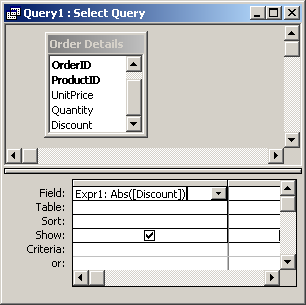
MS Access: Abs Function
This MSAccess tutorial explains how to use the Access Abs function with syntax and examples.
Description
The Microsoft Access Abs function returns the absolute value of a number.
Syntax
The syntax for the Abs function in MS Access is:
Abs ( number )
Parameters or Arguments
- number
- A numeric value.
Returns
The Abs function returns a numeric value.
Applies To
The Abs function can be used in the following versions of Microsoft Access:
- Access 2019, Access 2016, Access 2013, Access 2010, Access 2007, Access 2003, Access XP, Access 2000
Example
Let's look at how to use the Abs function in MS Access:
Abs (-210.67) Result: 210.67 Abs (-2.9) Result: 2.9 Abs (-3) Result: 3
Example in VBA Code
The Abs function can be used in VBA code in Microsoft Access.
For example:
Dim LNumber As Double LNumber = Abs (-210.6)
In this example, the variable called LNumber would now contain the value of 210.6.
Example in SQL/Queries
You can also use the Abs function in a query in Microsoft Access.
For example:

In this query, we have used the Abs function as follows:
Expr1: Abs([Discount])
This query will return the absolute value of the Discount field and display the results in a column called Expr1. You can replace Expr1 with a column name that is more meaningful.
For example:
AbsValue: Abs([Discount])
The results would now be displayed in a column called AbsValue.
Advertisements



